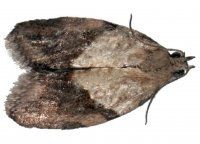Eighteen square miles of vineyards, apples and other agriculture in the Russian River Valley appellation are under quarantine, bringing to three the number of Sonoma County farming zones in which the destructive light brown apple moth has been found.
The moth (Epiphyas postvittana to the scientifically inclined, LBAM to the rest of us), originally from Australia, does its damage after females lay egg masses on the upper leaf surface and on grape clusters. The larvae build silky nests on the underside of the leaves, and when mature, feed upon the grapes.
LBAM was first found in California two years ago; now two dozen counties are considered to have one or more infested areas and are under quarantine, including the prime grape growing regions of Napa, Monterey, Santa Barbara and Santa Cruz counties, along with Sonoma.
The latest quarantine area, centred in Sebastopol, was announced on 16 March by state officials. The area includes 280 acres of grapes, 70 acres of apples and 23 commercial nurseries and landscaping companies. Those in the quarantine zone are prohibited from moving plant material off their properties without having it inspected first. Vineyards must be inspected prior to harvest.
There are no immediate plans for eradication, because the LBAM infestation is too broad, and too many residents would be subject to aerial spraying. Instead, state officials hope eventually to release millions of sterile moths in an effort to disrupt breeding.
In Sonoma County, the first two LBAMs were found in 2008 near the city of Sonoma; that quarantine was lifted later that year, after no more moths were found. A second quarantine is in place in the Carneros appellation, which overlaps southern Sonoma and Napa counties. As far as I can tell, no crop loss figures have been released in California.













